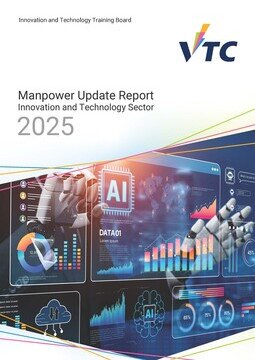Year 2021 Tooltips
Employees
Senior Management
0
Middle Management
0
Supervisor
0
Clerk
0
0
Insurance Agent
0
Other Supporting Staff
0
Total
0
Note(s):
The total reported number may not reflect the actual number of agents in the industry as insurance agents may possess licences of both life and general insurance and there exists a certain number of inactive life insurance agents in the market.
Senior Management
0
Vacancy rate: 0.6%
Middle Management
0
Vacancy rate: 2.0%
Supervisor
0
Vacancy rate: 2.1%
Clerk
0
Vacancy rate: 1.6%
0
Vacancy rate: 1.0%
Insurance Agent
0
Vacancy rate: 2.1%
Other Supporting Staff
0
Vacancy rate: 1.0%
Total
0
Vacancy rate: 1.9%
Note(s):
Readers should be cautious in interpreting the number of vacancies of insurance agents as the figures, with the reference date on 2 January 2021, may be subject to seasonal changes, business strategies, and manpower plans of different companies.
All the percentages are rounded to nearest 0.1%.
Managerial
0
Turnover rate: 6.5%
Supervisory
0
Turnover rate: 8.4%
Clerk
0
Turnover rate: 14.4%
0
Turnover rate: 7.8%
Insurance Agent
0
Turnover rate: 5.0%
Note(s):
Managerial staff included both senior management and middle management.
All the percentages are rounded to nearest 0.1%.
Monthly Income Tooltips
Note(s):
The figures did not include other supporting staff and included insurance agents.
All the percentages are rounded to nearest 0.1%.
Monthly Income Tooltips
Note(s):
The figures did not include other supporting staff and included insurance agents.
All the percentages are rounded to nearest 0.1%.
Preferred Education Tooltips
All the percentages are rounded to nearest 0.1%.
All the percentages are rounded to nearest 0.1%.
Preferred Education Tooltips
All the percentages are rounded to nearest 0.1%.
All the percentages are rounded to nearest 0.1%.
Recruitment Difficulties
1st
Lack of candidates with relevant experience and training
2nd
Working conditions/remuneration package could not meet recruits’ expectation
3rd
Insufficient graduates in relevant disciplines (e.g. Insurance, Business Administration, Banking and Finance, etc.) from tertiary institutions
Note(s):
The figures did not include other supporting staff and insurance agents.
Manpower Demand
Average Annual Growth
0
2021
Actual
0
2025
Forecast
0
Note(s):
(1) The figures included employees and vacancies.
(2) The figures did not include other supporting staff and included insurance agents.
(3) The manpower forecast is based on the statistical modelling of relevant economic indicators which reflect important changes in the local economy, demography and labour market.
All the percentages are rounded to nearest 0.1%.
Manpower Demand
Average Annual Growth
0
2021
Actual
0
2025
Forecast
0
Note(s):
(1) The figures included employees and vacancies.
(2) The figures did not include other supporting staff and included insurance agents.
(3) The manpower forecast is based on the statistical modelling of relevant economic indicators which reflect important changes in the local economy, demography and labour market.
All the percentages are rounded to nearest 0.1%.
Report

- Insurance
- 2021 Manpower Survey Report
Picking Up the Pace of InsurTech
Insurance companies are taking steps to recover from the adverse impact of COVID-19 and transform the industry into a new shape in order to bring it to the next higher level. Companies with better digital capabilities will have an upper hand at picking up sales. On the road to InsurTech, employees, brokers, and agents should be integrated at each step through digital interfaces. Though people are an integral part of the digitisation process, data privacy and cybersecurity cannot be overlooked.

- Insurance
- 2024 Manpower Update Report
Navigating Talent Development in the Evolving Insurance Landscape of the Insurance Industry
The insurance industry is undergoing a dynamic evolution driven by three key factors: the expedite Greater Bay Area (GBA) integration, technological advancements and evolving regulatory frameworks. Market trends indicate a growing demand for talent across various domains, with the expanding GBA opportunities spurring recruitment for frontline sales professionals, while the industry simultaneously seeks back-end specialists in actuarial services, data analytics, and information technology roles. New regulatory initiatives, such as the Risk-based Capital (RBC) regime and the International Financial Reporting Standard (IFRS) 17, have created urgent needs for risk management and accounting professionals. Notable skill gaps have emerged in data analytics, cybersecurity, and cross-cultural communication, with training requirements primarily focusing on digital competencies for emerging technologies and insurtech applications, specialised knowledge for complex areas such as family office services and regulatory compliance, and enhanced customer service capabilities for an increasingly sophisticated market. These findings underscore the importance of developing targeted training programmes and industry-education collaboration to address current manpower development needs for the industry's digital transformation.




























































